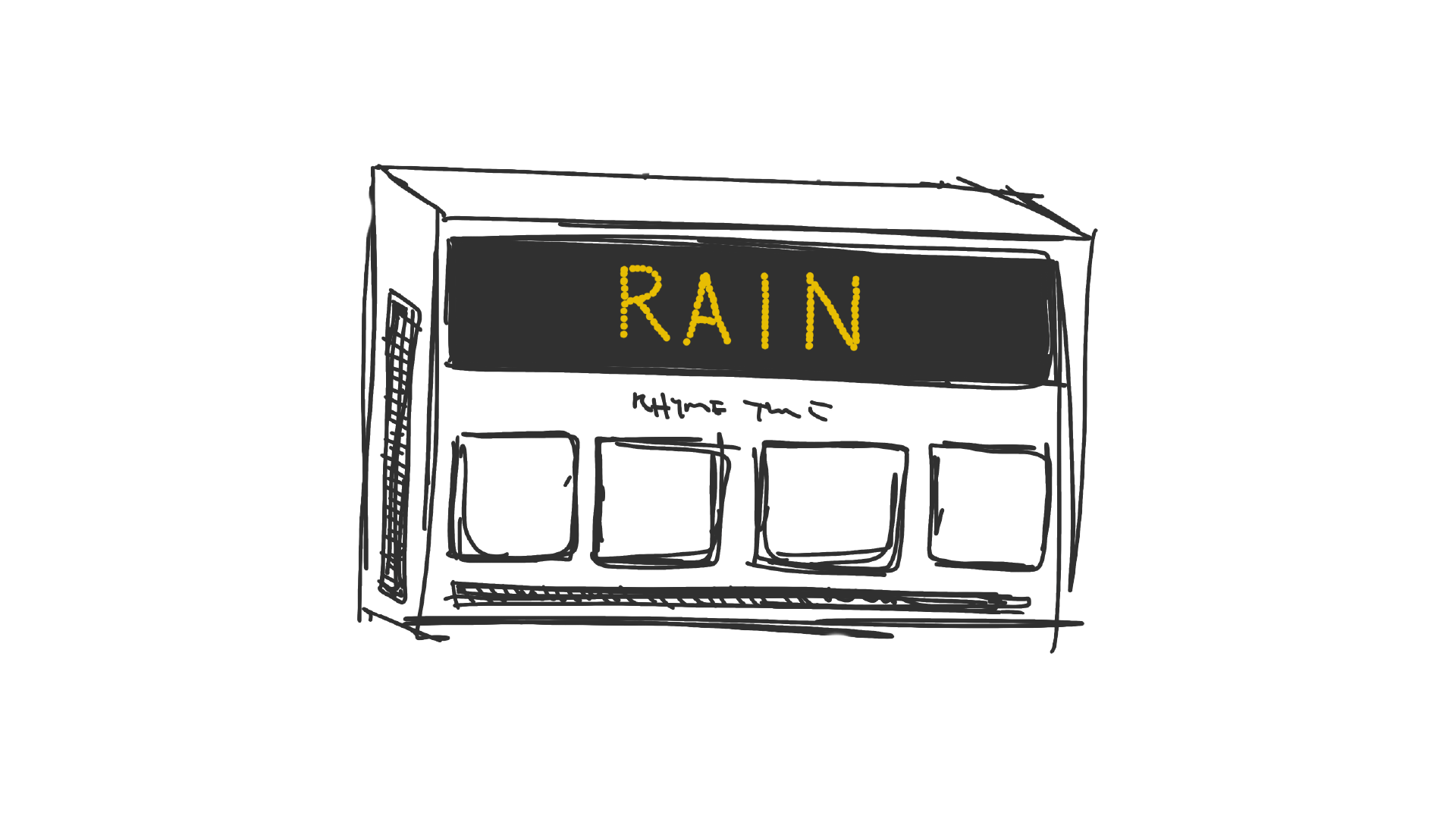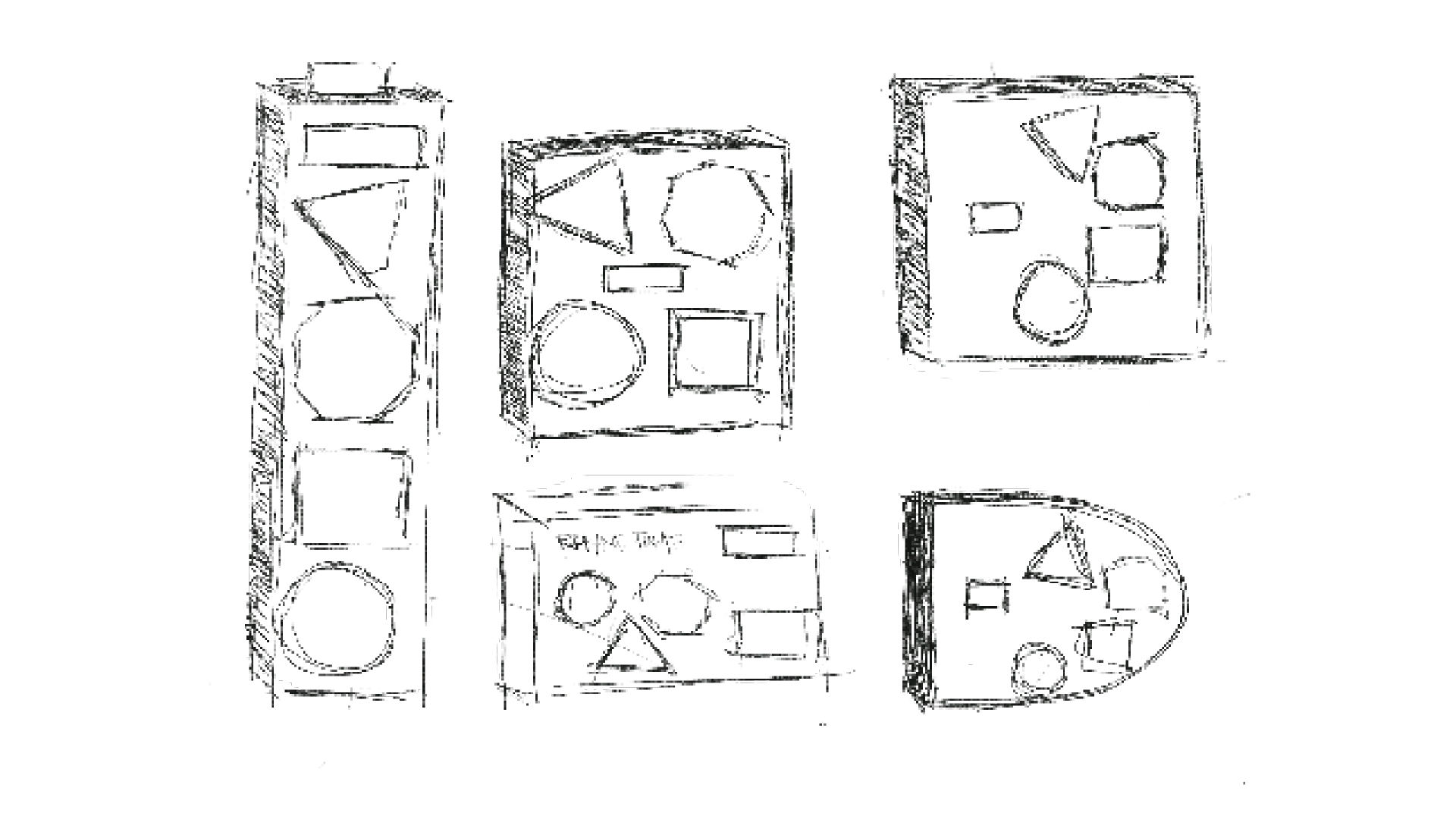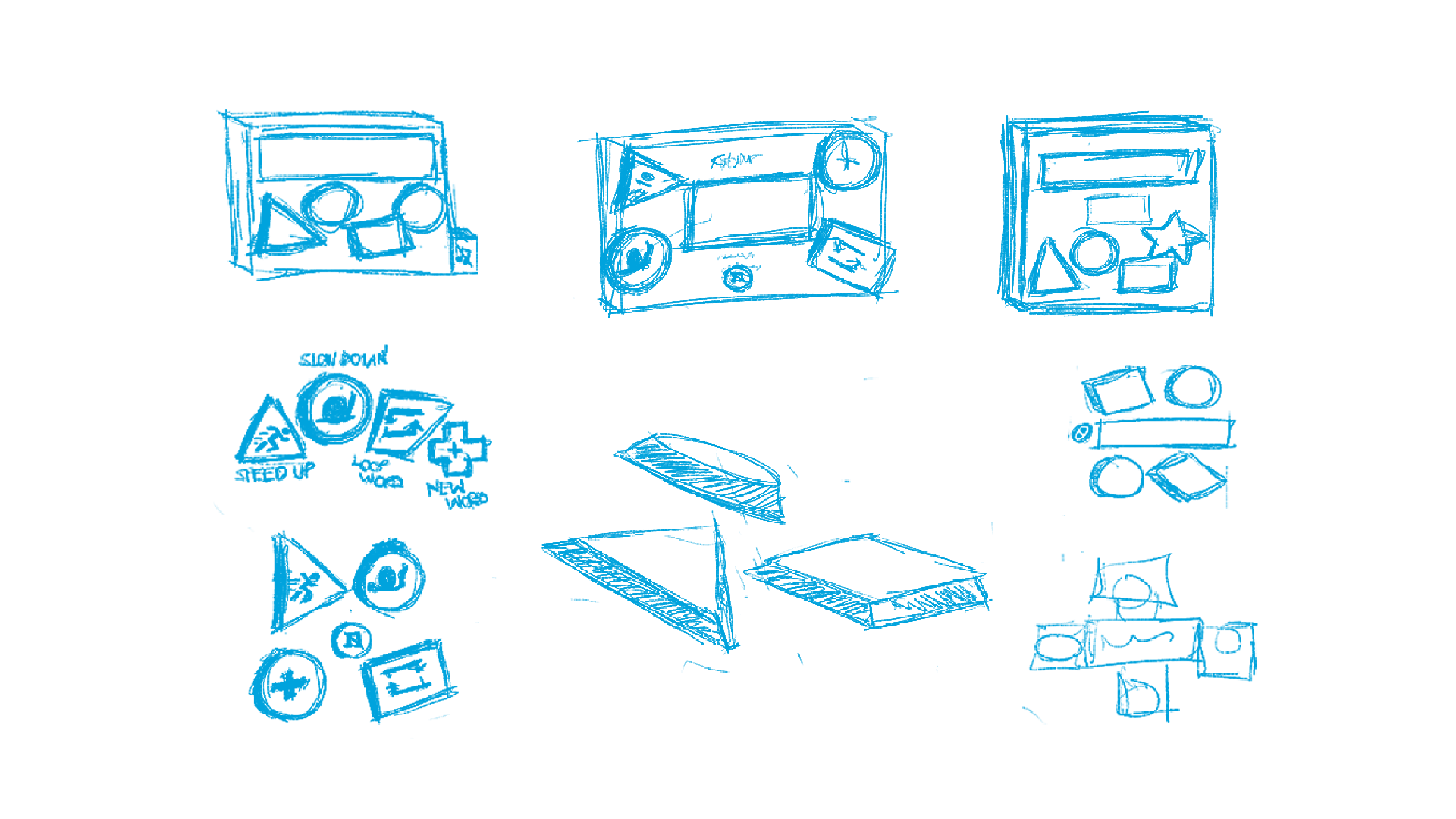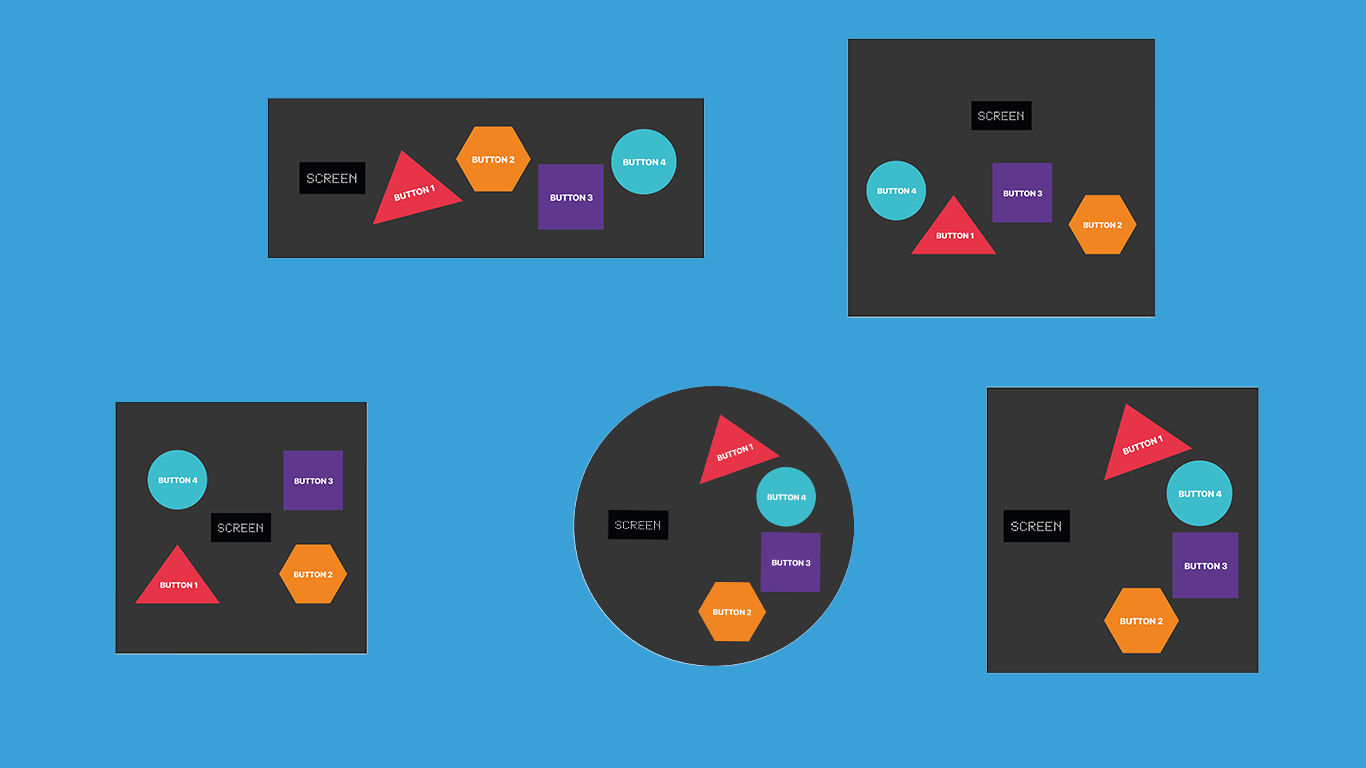How can we turn waiting into a bit of wonder?
In urban life, mundane moments, such as waiting at traffic lights, are often overlooked. For this university research project during my time at Bauhaus University Weimar, we asked, What if waiting became a moment of play?
Our answer: RhymeTime, a playful, interactive music box designed for pedestrian crossings. It invites people to sing, rhyme, hum, or interact with it, aiming to turn everyday crossings into mini-performances: a public intervention that is part safety, part poetry, and part fun.
Brief
Developed for the course Let's Have Fun: Exploring Playfulness in Interaction Design, our goals were simple yet layered:
• Enhance pedestrian safety by reducing jaywalking through engagement.
• Reimagine the urban experience by transporting idle time into something joyful.
Research & Insights
We began by exploring:
• What makes people engage at crossings?
• How do play, control and sensory feedback affect behaviour?
• Where do design and distraction meet?
Methodology
• Literature review (play, gamification, urban design and behaviour)
• Case study analysis of existing interventions (like ActiWait)
• Expert Interviews with a cognitive psychologist, a traffic engineer and musicians.
Key Findings
• Pedestrians crave a sense of control, even if it's pressing a button.
• Familiar playful elements like music lower inhibitions.
• Interventions must respect accessibility (esp. for visually impaired users)
Our design was grounded in five principles of playfulness (Guitard et al., 2005): creativity, curiosity, humour, pleasure, and spontaneity. We also honoured a core idea: play should be open and intentional, never forced.
To kick off ideation, we used body storming, drawing chalk crossings, and role-playing as seniors, kids, joggers, and distracted adults, grounding us in empathy. There are different types of crossings used in Germany and other Western countries. However, we chose zebra crossings for their high visibility and neutrality.
Concepts Explored:
Interactive footpath patterns, a music box with call and response prompts, and rhyming games that are activated during red lights.
Prototyping RhymeTime
Low-Fidelity
Initial sketches imagined a simple box with musical prompts. Tasks like "rhyme," "sing," or "hum" aimed to spark joy rather than perfection or expertise. Here, we began questioning what would incentivise pedestrians to engage with the device, disregarding feelings of shyness or embarrassment.


Medium-Fidelity
The prototype evolved into a Bristol-board box with colourful geometric buttons, each triggering tempo changes, tracks or prompts. Inside, we used Adafruit hardware to simulate interaction for testing.
Due to hardware limitations, we created a video mockup for user testing and exhibition.


Interaction and Experience
Interaction Design
We focused on creating a low cognitive load and high delight experience. Introductory sounds and applause sounds provided feedback, giving pedestrians small wins for engagement and holding them at bay, lowering the intentions of jaywalking.
Physical Form
Geometric buttons offered a tactile variation of interaction: Circles slowed the tempo of the music, triangles sped it up, and squares changed the track or prompt.
The final form was boxy but friendly, with soft buttons for interaction, distinguished from the start button, which was hard and easily integrated into the pedestrian landscape.
Music and Sounds
Music choices were upbeat, simple, and familiar, licensed royalty-free tracks with adjustable BPM (beats per minute). An important decision is to give users control while keeping the interaction light and accessible.
Validation
Due to the prototype stage and duration of the project, we validated our approach through expert interviews to gain insights into the design and potential.
Cognitive Psychologist: Primarily applauded the sense of control but warned of distraction, notably for children and impaired pedestrians.
Musician: Suggested familiar, low-effort prompts like "yodel" or "hum" to reduce performance/competence anxiety that can arise from "sing" or "rhyme”.
Traffic Engineer: Supported playful interventions to reduce "dead-time," but raised concerns about audio conflicts for not only visually impaired users but also polluting residential areas. They recommended a start button and limiting installations city-wide.
Results and Reflection
There are several successes for this exploration of playfulness in urban spaces, notably:
• The prototype effectively introduced play into a non-play setting.
• Experts agreed that the system could reduce jaywalking and enhance the urban experience.
• The concept embodied all five dimensions of play without overwhelming the users.
Areas to improve
• The device has a lot of room for improvement, such as adding enhanced visual cues to support sound.
• Testing and refining how users interact with the device (e.g., opting in via the suggested start button) to mitigate noise fatigue.
• Safety, particularly near high-traffic zones, especially for children.
Looking back on this assignment, RhymeTime and this course instilled a core principle in my design career: the integration of playfulness in interaction design to create delightful user experiences. It easily became a reminder that even small design choices can shape how people move, wait and connect. We can design for joy without losing sight of responsibility. In the end, it asked a simple question:
Why don't cities feel more human and engaging?
From large-scale projects to simple street crossings.